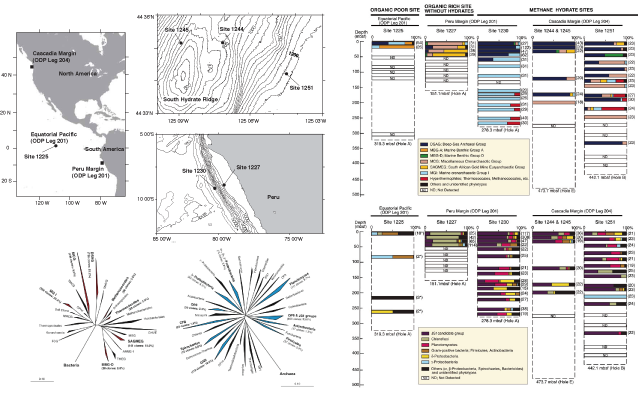Achievements
[2006]
The worldfs first elucidation of genetic diversity and biogeography in unknown functional groups of microorganisms in subseafloor sediments of the East Pacific Continental Margin
At Integrated Ocean Drilling Program (IODP), finding out all the details about deep-ocean biosphere has been the cornerstone of the scientific research plans. However, not much was discovered regarding the microbial biomass that exists beneath the deep-ocean. One of the first attempts at an ODP research programs was gSub-sea floor microbial biosphere drilling research voyageh, in which SUGAR program sent out Fumio Inagaki (a handsome, single guy back then) who gracefully won the scrambling of getting the best samples from the deep subseafloor. He analyzed the genetic diversity of deep subseafloor microbial components. His results showed that the microbial communities in the subseafloor sediments consisted of the totally phylogenetically different microorganisms from the surface world even though they were functionally unknown.@

Fig. (Right) The ODPfs first gmicrobiology-dedicated drilling research voyageh was done at the locations of Peru Margin and Cascadia Margin. Vertical diagrams show the archaeal and bacterial community structure changes in a few hundred meters of the sediments. The phylogenetic trees represent the systematic characteristics of such subseafloor Archaea and Bacteria. We can see that most of the dominant microorganisms in the deep subseafloor are genetically greatly different from the ones in the surface environments. In other words, we can say that the subseafloor microbial world is considerably isolated from the surface world by a large (geologic) time scale. This will lead us to gain deeper understanding of how the functionally unknown microorganisms in the subseafloor are associated with the global scale of circulations of elements and energy sources in both surface and subsurface.
